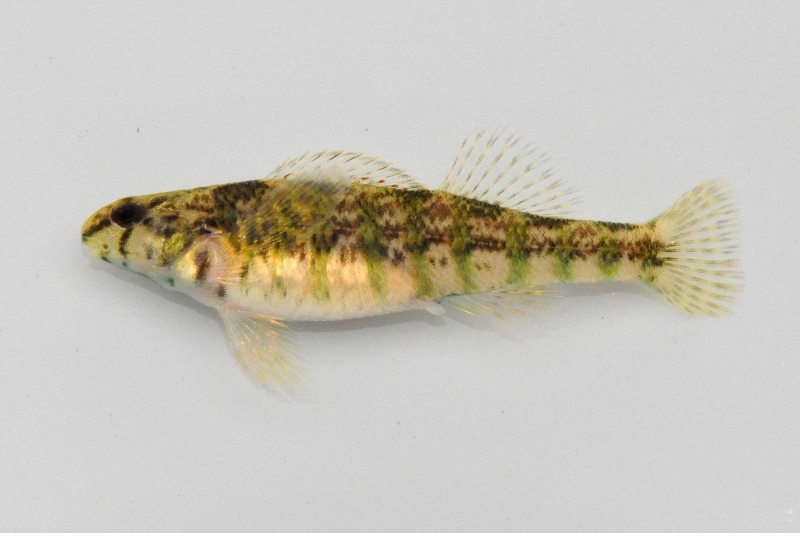Banded Darter
( Etheostoma zonale )


The banded darter is one of the more abundant darter species found in Ohio. Like many darters breeding males are very brightly colored (top). Females are duller in appearance (right).
Description
The banded darter has a rather short and stubby body shape. The similar looking Greenside Darter has a more long and slender body shape. Banded darters have a rusty red band at the base of their first dorsal fin, and many small spots that often form rows on their second dorsal fin and tail. They also have 4-7 darker saddle markings over their back and a distinct dark teardrop marking under the eye. Breeding male banded darters have 8-13 bright green narrow vertical bands from just behind the head extending to the base of their tail. Male greenside darters have 4-7 similar bands that are much thicker and typically more distinct on the rear half of their body. The rusty read band on the first dorsal fin of breeding male banded darters is a bright brick red. Female banded darters also have green bands but they are rather faint compared to those of a male. Young banded darters lack green bands but the 4-7 saddles on their back and tear drop under the eye are very distinct.
Habitat and Habits
Banded darters can be found in all sizes of streams from small creeks to large rivers. They are most abundant in swift riffles of medium sized streams where the rocks are covered with filamentous algae. Banded darters are one of the more abundant darter species found in Ohio. However, they are only found in the Ohio River drainage and are absent from the streams and rivers of Northern Ohio draining into Lake Erie.
Reproduction and Care of the Young
Banded darters spawn from mid April to mid May in swift riffles. They have adhesive eggs which they attach to filamentous algae and aquatic mosses that grow on the surface of rocks. Once the eggs are laid the male guards the area for a short time but provides no further parental care for the young.